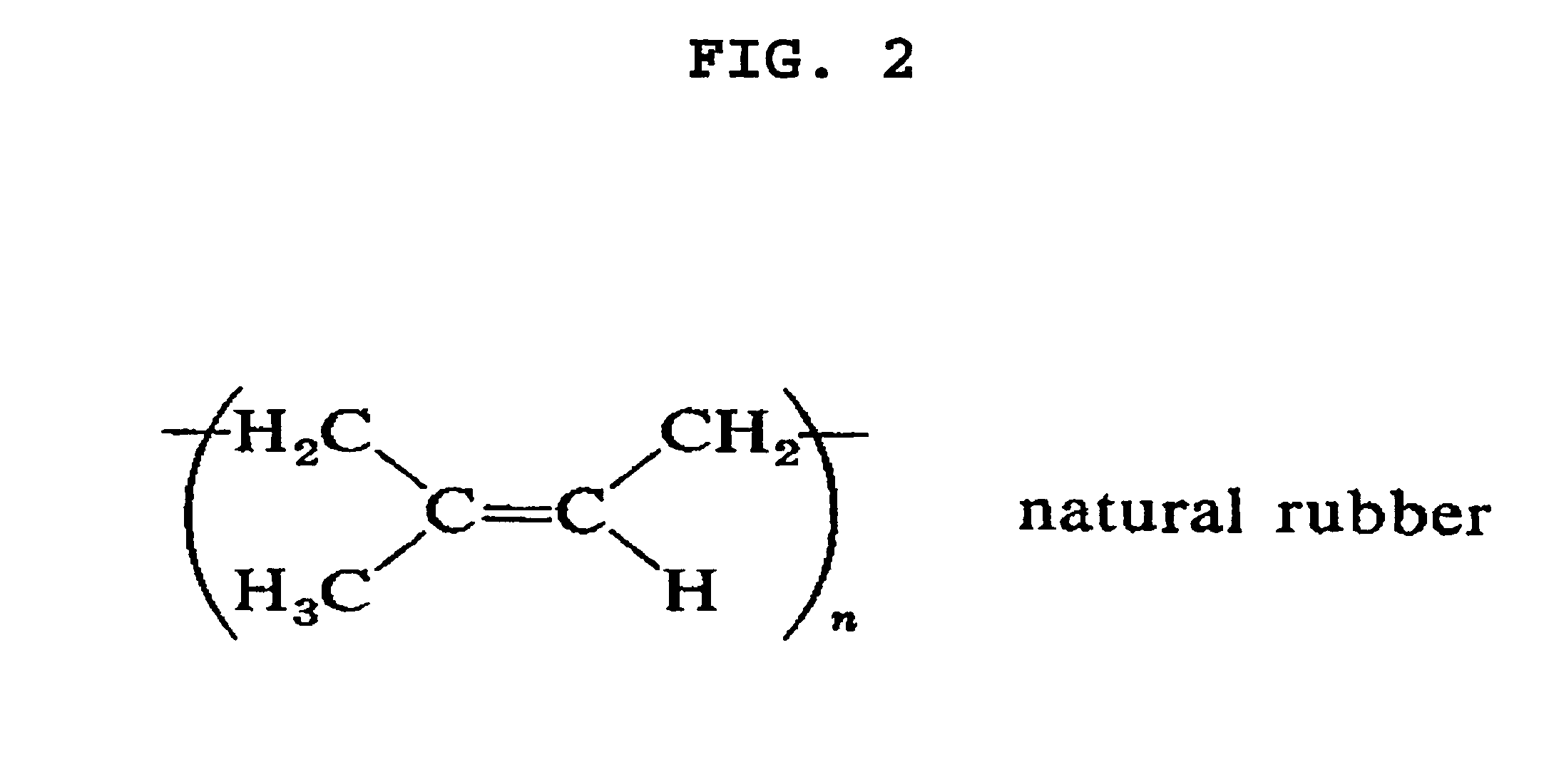Method for processing elastomers
a technology of elastomers and elastomers, which is applied in the field of processing methods for elastomers, can solve the problems of difficult storage of tires in landfills, waste of used tires, and waste of resources, and achieves the effects of improving environmental protection, improving the quality of recycled raw materials, and ensuring the quality of the process
- Summary
- Abstract
- Description
- Claims
- Application Information
AI Technical Summary
Benefits of technology
Problems solved by technology
Method used
Image
Examples
Embodiment Construction
Reference will now be made in detail to the presently preferred embodiment of the invention. It will be apparent to those skilled in the art that modifications and variations can be made in the present invention without departing from the scope or spirit thereof. For instance when using scrap rubber from sources other than tires, the particular steps described for tires will be adapted to the alternative sources. Thus, it is intended that the present invention covers such modifications and variations as come within the scope of the appended claims and their equivalents.
The present invention discloses a method for breaking down waste tires and reclaiming the components thereof. The method begins with a quantity of used tires 11 which are processed into chips 12. The cutting up of the rubber into rubber chips can be achieved by any suitable means known in the art. The rubber is broken up into pieces typically of about 5×5×1 cm, although the particular size is not critical. In addition...
PUM
| Property | Measurement | Unit |
|---|---|---|
| Fraction | aaaaa | aaaaa |
| Fraction | aaaaa | aaaaa |
| Fraction | aaaaa | aaaaa |
Abstract
Description
Claims
Application Information
 Login to View More
Login to View More - R&D
- Intellectual Property
- Life Sciences
- Materials
- Tech Scout
- Unparalleled Data Quality
- Higher Quality Content
- 60% Fewer Hallucinations
Browse by: Latest US Patents, China's latest patents, Technical Efficacy Thesaurus, Application Domain, Technology Topic, Popular Technical Reports.
© 2025 PatSnap. All rights reserved.Legal|Privacy policy|Modern Slavery Act Transparency Statement|Sitemap|About US| Contact US: help@patsnap.com



